In Xi’an, every brick and tile is a chapter of history; every bite of soup and bread carries a millennium of fireworks (millennium of daily life’s essence). Nestled gently by the Wei River, this ancient city – cradled by the majestic Qinling Mountains and the tender embrace of eight rivers – blends grandeur with grace into a singular charm. As the morning bells and evening drums cast dappled shadows on the city walls, as the aroma of lamb paomo (stewed bread in broth) mingles with the robust cries of Qinqiang Opera drifting past the Bell Tower, one suddenly comprehends: Chang’an never truly left. It merely donned a new guise, patiently awaiting your discovery of its past and present lives.
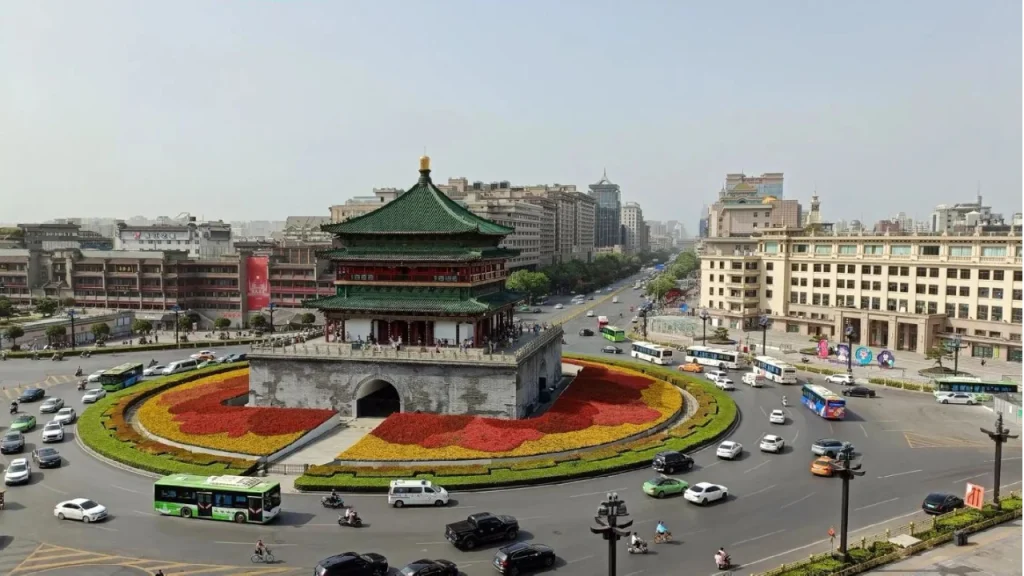
I. Geographic Epic: A Millennial Imperial Capital Painted by Mountains and Rivers
Unfold China’s topographic map, and Xi’an emerges as a pearl cradled in the earth’s palm. To the south, Mount Taibai—the sovereign peak of the Qinling Mountains—pierces the heavens at 3,767 meters, while to the north, the Wei River snakes like a silver thread through the eight-hundred-li Qinchuan Plain, unfurling golden silk beneath. This “embrace of mountains and rivers” layout inspired King Wu of Zhou to proclaim when establishing his capital here: “Here shall I dwell in the heart of China, to govern its people.”
Seasons in Xi’an unfold like ink-wash paintings: cherry blossoms blanket Qinglong Temple like snow in spring, lotuses mirror the sun at Qujiang Pool in summer, ginkgo leaves drape Ancient Guanyin Temple in gold come autumn, and silent snow cloaks the Daming Palace ruins in winter. Yet spring and autumn are the masterpieces—when willow “snow” dances along the Ba River while peonies bloom at Lotus Garden, when the fragrance of sophora blossoms at the City Wall’s base mingles with the ink aromas of Academy Gate, the entire city transforms into a living Wang Chuan Tu (Scroll Painting of Wangchuan).

II. Time-Space Folding: Touching the DNA of Civilization in the 13-Dynasty Capital
Then there are the living historical tableaus: beneath the carved brickwork of the Huajue Lane Great Mosque, the aroma of Huimin Street’s lamb and beef has wafted for seven centuries; on the shadow puppet stage of the Gao Family Courtyard, heroes of the Three Kingdoms still clash within square inches of stretched hide, guided by the flickering fingers of age-old artisans. Most awe-inspiring is the Shaanxi History Museum, where from Lantian Ape-Man’s stone tools to the Tang Dynasty’s grape-and-floral silver incense balls unearthed from the Hejiacun Hoard, half the saga of Chinese civilization gleams behind glass—a civilization forever alive, forever unfolding.
Walking Xi’an’s streets is to stumble into historical vortices at every turn. In the Forest of Stone Steles Museum, Yan Zhenqing’s Stele of the Multi-Treasure Pagoda bears ink still fresh, as if the calligraphy sage had just flicked star-like droplets from his brush. The pottery xun flutes of Banpo Neolithic Village resonate across six millennia, their vibrations trembling faintly within museum display cases. Stand at the Danfeng Gate ruins of Daming Palace—where once the world’s envoys thronged the imperial avenue—and glance upward to modern airplanes slicing the sky, and you’ll feel time’s dislocation as Li Bai immortalized: “Hearts soaring with noble fervor, minds alight with grand designs.”
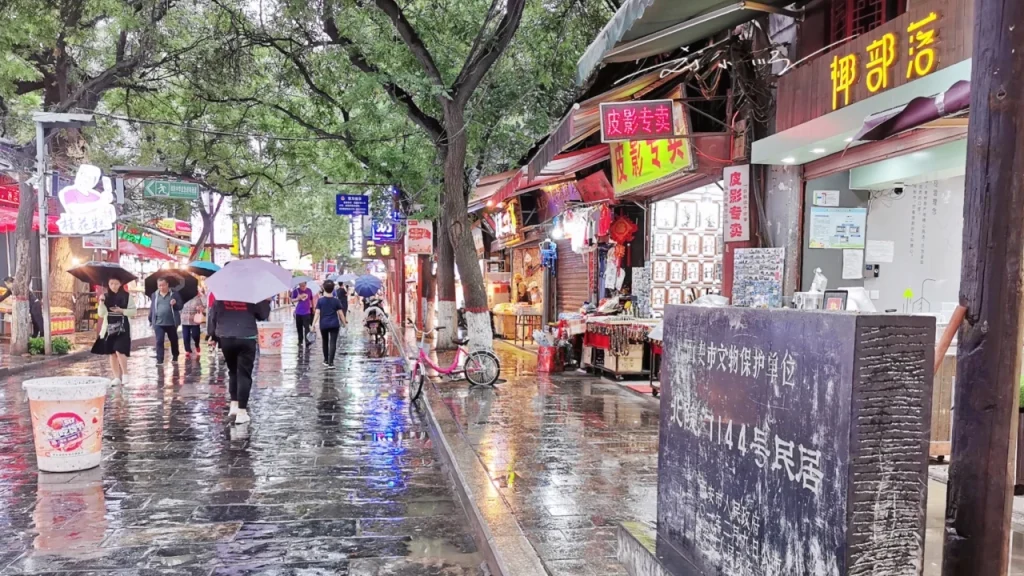
III. Chang’an on the Tip of the Tongue: The Tang Dynasty’s Splendor in a World of Carbs
A Xi’an morning begins with a bowl of hula tang (pepper soup). Meatballs bob in the thick broth, paired with crumbled morsels of deep-fried dough. Chili and pepper explode on the tongue, beads of sweat prickling the forehead—this is the authentic Shaanxi way of savoring “A mei” (utter contentment). Yet the true culinary drama unfolds within the century-old establishments hidden beneath Huimin Street’s gray-tiled roofs.
The chefs at Lao Sunjia’s paomo (stewed bread) shop will tell you: the soul of lamb paomo lies in “simmering.” They use Yanchi beach lamb, stewed gently over low heat for six hours until the broth turns milky white and the meat dissolves like clay. The bread must be torn into honeybee-head-sized pieces to fully absorb the elixir. When the steaming porcelain bowl arrives, a symphony erupts—sweet-sour pickled garlic, refreshing cilantro, and fiery chili paste harmonize in each bite. For a fleeting moment, you glimpse Xuanzang’s farewell: Chang’an’s citizens raising such earthen bowls to bid him adieu before his legendary journey westward.
Tong Shengxiang’s beef-and-lamb paomo hides a different philosophy. They insist on using Qinchuan cattle’s brisket, simmered with over thirty secret spices, and even the firewood—jujube logs from Weibei’s arid plateaus—is chosen with care. The broth, deceptively clear, condenses eight hours of marrow-rich depth, much like the city itself: unassuming in appearance, yet hiding profound layers beneath.
For street-level fireworks (Hustle and bustle), the Sa Jin Bridge night market thrills. Fatty’s steamed date cake wafts its fragrance halfway down the street, while Lao Wu’s fried dough twists soothe midnight hunger with crunch. But connoisseurs vanish into Da Pi Court, where Ma Hong’s stir-fried paomo reigns. They order the sour-spicy stir-fry, watching chefs orchestrate tomatoes, wood ear mushrooms, tofu, and lamb into a sizzling mosaic of flavors—a culinary firework that could only erupt in Xi’an.
IV. Time Traveler’s Guide: Checking In to Chang’an at the Crossroads of Past and Present
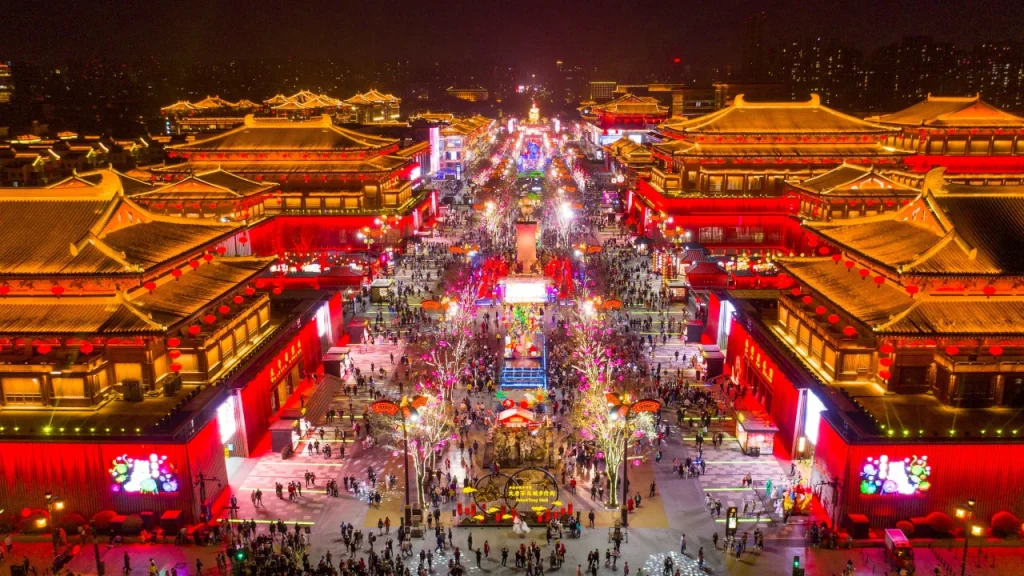
Must-Visit Landmarks:
- Museum of the Qin Terracotta Warriors and Horses: Stand before Pit 1, where the Qin Dynasty’s army still stands in battle array after two millennia. Don’t miss the Bronze Chariot Hall—those ancient chariots, adorned with gold and silver wires thinner than 0.5 millimeters, represent the zenith of pre-industrial technology.
- Tang Paradise: As night falls, this 2.1-kilometer pedestrian street transforms into a celestial boulevard of the Tang Dynasty. Feel a “tumbler girl’s” flowing sleeves brush your cheek, exchange verses with Li Bai outside the Drunken Immortal Pavilion, and lose track of time in this dreamlike tableau.
- Huaqing Palace: Touch the Crabapple Bloom Pool from Song of Everlasting Regret, where the lingering warmth of Emperor Xuanzong and Lady Yang’s love story still clings to the marble. Each winter, an open-air performance amidst the hot springs’ mist transports you back to the era of “imperial baths in spring’s chill.”
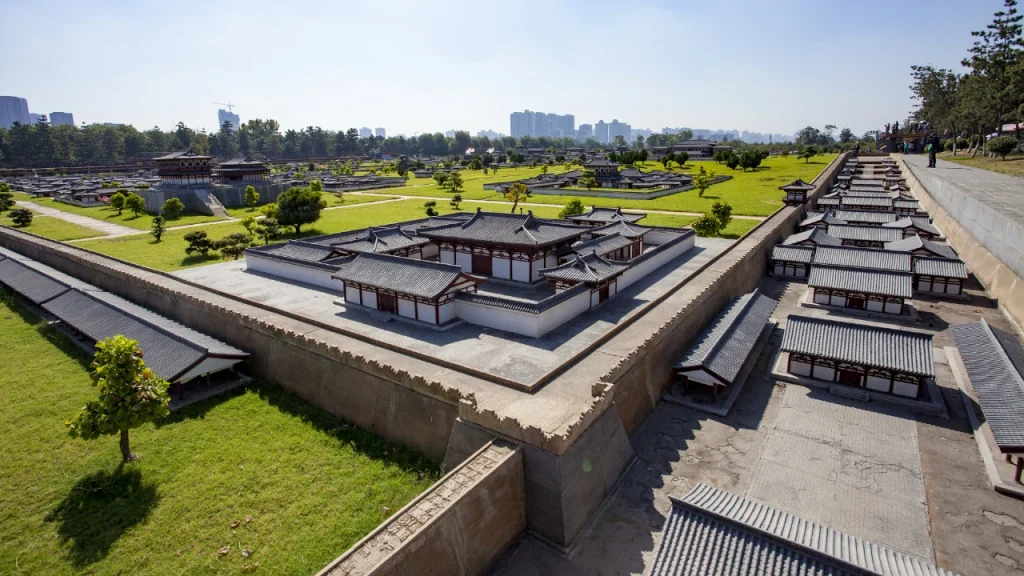
Hidden Gems:
- Forest of Stone Steles Museum: Decode the DNA of Chinese calligraphy amidst seven imperial steles. Beneath weather-worn inscriptions, witness Yan Zhenqing’s sorrow and Liu Gongquan’s moral fortitude preserved in stone.
- Daming Palace National Heritage Park: The Danfeng Gate Museum’s digital revival breathes life into vanished halls. Stand where the Dragon’s Tail Path once welcomed envoys from afar—now modern airliners streak the sky above.
- Gao Family Courtyard: Within this Ming Dynasty official’s residence hides China’s most complete shadow puppet stage. As dusk falls, an elder artisan animates Three Kingdoms heroes carved from donkey hide; their shadows dance across brick carvings, unfolding the city’s temporal folds.
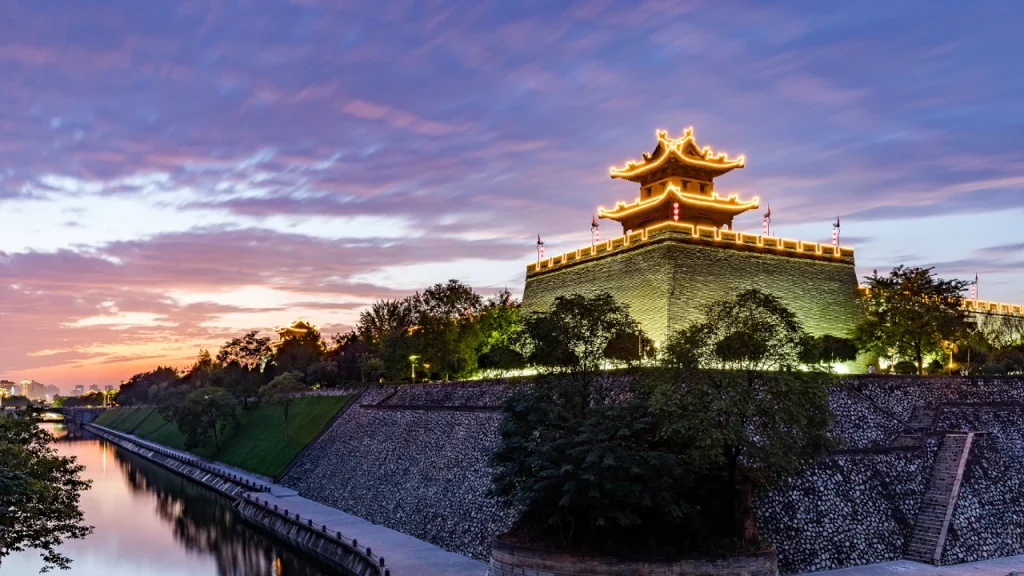
V. Chang’an’s Twelve Hours: An Immersive Experience Guide
Mao Time (5-7 AM): In the City Wall Park, locals rouse the ancient city with Qinqiang Opera. Join the amateurs in belting “Wang Chao chuan lai Ma Han bing!” (“Messengers Wang and Ma approach the throne!”)—and feel the city’s spirit surge through your veins.
Chen Time (7-9 AM): At Da Pi Court’s morning market, the air hums with fried dough twists and steamed date cakes. Perched on a low stool, bite into Jia Wu’s just-steamed hula tang (pepper soup) and watch steam curl into morning light like ink painting scrolls.
Wei Time (1-3 PM): At Xiangzi Gate Street’s Qingqu Comedy Club, Miao Fu and Wang Sheng’s crosstalk “A Scholar’s Burden” crackles with Shaanxi’s wit—a comedic gene etched deep in the locals’ bones.
Xu Time (7-9 PM): Rent a bicycle on the City Wall. As sunset gilds the arrow towers and Tang Paradise’s lights bloom in the distance, you’ll pedal along history’s fault line—where the past and present converge.
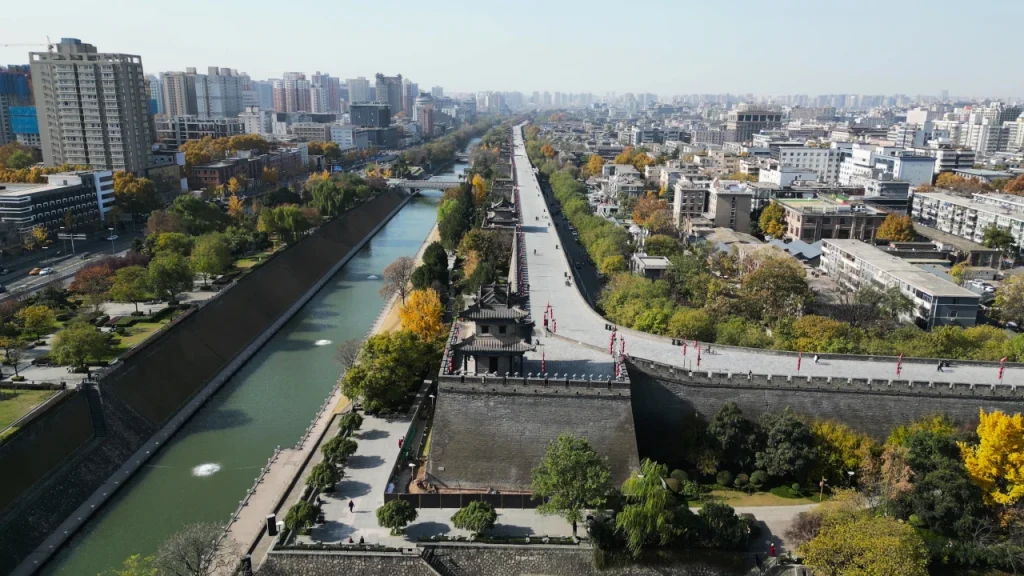
In Xi’an, every brick is a history book, every bowl a legend. When you finish your last bite of marinated beef sandwich in Huimin Street’s bustle, when you carry a Chengni inkstone from Academy Gate’s scholarly fragrance, you’ll suddenly grasp: Chang’an never vanished. She merely transmuted Tang Dynasty grandeur into street-level fireworks, distilled millennia of civilization into flavors that linger on the tongue. This city waits forever—for you to taste her stories, to savor her soul.

Leave a Reply